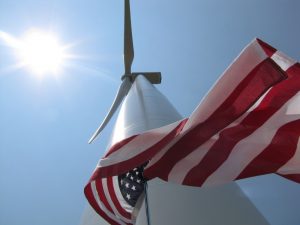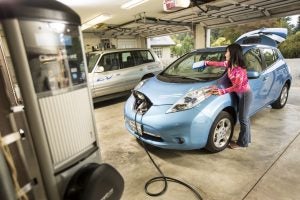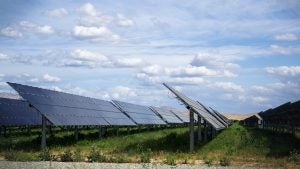 President Trump’s administration dubbed last week “Energy Week,” including a theme of “energy dominance.” Instead of exploring America’s clean energy potential, we’re waiting for the July release of a report by the U.S. Department of Energy (DOE) examining whether the early retirement of power plants and impact on grid reliability can be blamed on requiring coal plants to reduce pollution while incentivizing clean energy sources. Taken together, and with the fact that the president pulled the country out of the Paris Agreement, America’s energy agenda gives me pause and cause to worry.
President Trump’s administration dubbed last week “Energy Week,” including a theme of “energy dominance.” Instead of exploring America’s clean energy potential, we’re waiting for the July release of a report by the U.S. Department of Energy (DOE) examining whether the early retirement of power plants and impact on grid reliability can be blamed on requiring coal plants to reduce pollution while incentivizing clean energy sources. Taken together, and with the fact that the president pulled the country out of the Paris Agreement, America’s energy agenda gives me pause and cause to worry.
We don’t yet know what the DOE report is going to say, but judging from Secretary of Energy Rick Perry’s past stance on energy and his latest statements on the matter, it could suggest that the coal industry that has long-been economically uncompetitive due to oversupplied, cheap natural gas, could be propped-up to spew toxic emissions into the future.
Here is the reality: climate change is not a political issue; it is the single greatest threat we face as a generation. Clean energy is our best option to prevent the environmental situation from getting worse because it is at the core of every climate issue. Fortunately, Americans agree on this, and know something must be done. Read More
 This post was updated on June 5, 2017.
This post was updated on June 5, 2017.
 Americans are switching to cleaner cars and electricity. In addition to being smart purchases, these clean energy choices could be a political statement. Consumers are choosing to use their hard-earned dollars to show what they want: clean energy, a clean economy, and government policies that reflect their values.
Americans are switching to cleaner cars and electricity. In addition to being smart purchases, these clean energy choices could be a political statement. Consumers are choosing to use their hard-earned dollars to show what they want: clean energy, a clean economy, and government policies that reflect their values. By: Jori Mendel, AT&T Smart Cities, and Chandana Vangapalli, former Environmental Defense Fund Climate Corps Fellow
By: Jori Mendel, AT&T Smart Cities, and Chandana Vangapalli, former Environmental Defense Fund Climate Corps Fellow California is a leader, and has earned that title – it is the
California is a leader, and has earned that title – it is the